The
clutch release bearing is subjected to axial load, impact load, and radial centrifugal force during high-speed rotation during use. In addition, since the fork thrust and the reaction force of the separating lever are not on the same straight line, a torsional moment is also formed. Clutch release bearing has poor operating conditions. It intermittently rotates at high speed and withstands high-speed friction. It has a high temperature, poor lubrication conditions, and no cooling conditions.
The damage of the clutch release bearing has a lot to do with the driver's operation, maintenance and adjustment. The reasons for the damage are roughly the following:
Excessive operating temperature causes overheating
Many drivers often step on the clutch when turning or slowing down. Some drivers also put their feet on the clutch pedal after the gear is engaged. This can result in incomplete clutch separation and the clutch is in a semi-engaged and semi-detached state. This state causes dry friction and generates a large amount of heat transfer to the separation bearing. The bearing is heated to a certain temperature, and the butter melts or dilutes the flow, so that the temperature of the separation bearing is further increased. When the temperature reaches a certain level, it burns out.
Lack of lubricant and wear
The clutch release bearing is lubricated with butter. There are two ways to add butter. One is to open the rear cover of the bearing to fill the grease during maintenance or when removing the transmission, and then reassemble the back cover. The other is to remove it and put it in the melted grease for digesting, and then take it out after cooling to achieve the purpose of lubrication. The amount of wear of the separated bearing in the case of no lubrication or less lubrication is often several of times to several tens of times the amount of wear after lubrication. The increased wear of the release bearing is more likely to be damaged.
Free travel is too small or too many loads
According to requirements, the gap between the general clutch release bearing and the separating lever is 2.5 mm. It is reflected in the free travel of the clutch pedal is 30mm-40mm. If the free travel is too small or there is no free travel at all, the separation lever and the release bearing will be in a normally engaged state. According to the fatigue failure principle, the bearing working time is longer, and the damage is more serious. Moreover, the working time is longer, and the temperature of the bearing is higher and it is easier to burn.
In addition to the above three reasons, whether the separation lever is adjusted flat or not, and whether the separation bearing return spring is good or not, has a great influence on the damage of the separation bearing.

 Wheel Bearing
Wheel Bearing is a set of steel balls or rollers held together by a metal ring called a race. They help wheels spin fast with as little friction as possible. View More
Wheel Bearing
Wheel Bearing is a set of steel balls or rollers held together by a metal ring called a race. They help wheels spin fast with as little friction as possible. View More Wheel Bearing Kits
When you need to change the wheel hub bearing,you also need to replace many other parts at the same time,such as hub nut,bolt,seals,split pin,and so on. View More
Wheel Bearing Kits
When you need to change the wheel hub bearing,you also need to replace many other parts at the same time,such as hub nut,bolt,seals,split pin,and so on. View More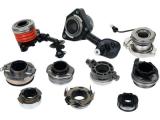 Clutch Release Bearing
Clutch Release Bearing is what presses down on the rotating spring plate or "pressure plate" to release the clutch disk. View More
Clutch Release Bearing
Clutch Release Bearing is what presses down on the rotating spring plate or "pressure plate" to release the clutch disk. View More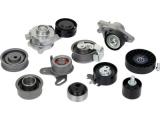 Belt Tensioner
A Drive Belt Tensioner is a pulley mounted to either a spring mechanism or to an adjustable pivot point that is used to keep constant tension on your serpentine belt. View More
Belt Tensioner
A Drive Belt Tensioner is a pulley mounted to either a spring mechanism or to an adjustable pivot point that is used to keep constant tension on your serpentine belt. View More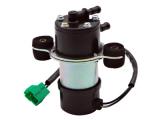 Fuel Pump
AiX provide you with the high quality of electric fuel pump and fuel pump assembly.Fuel pump assembly is one of the vital components of fuel injection system for EFI vehicle. View More
Fuel Pump
AiX provide you with the high quality of electric fuel pump and fuel pump assembly.Fuel pump assembly is one of the vital components of fuel injection system for EFI vehicle. View More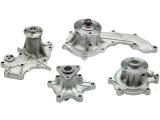 Water Pump
The reliable and effective operation of an automobile engine requires the cooperation of many parts. View More
Water Pump
The reliable and effective operation of an automobile engine requires the cooperation of many parts. View More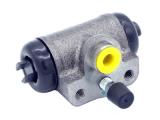 Wheel Brake Cylinder
When you want your car to slow down or stop, you need to take the brake operation. At this point, you need to step down your brake pedal. View More
Wheel Brake Cylinder
When you want your car to slow down or stop, you need to take the brake operation. At this point, you need to step down your brake pedal. View More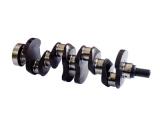 Crankshaft
Crankshaft is also known as crank.It is the important part of an engine to convert the up and down motion of the pistons into horizontal rotation.It is usually made by cast iron or forged steel. View More
Crankshaft
Crankshaft is also known as crank.It is the important part of an engine to convert the up and down motion of the pistons into horizontal rotation.It is usually made by cast iron or forged steel. View More VVT PHASER & OCV
VVT is the abbreviation of Variable Valve Timing. VVT PHASER is the vital component for the VVT engines. View More
VVT PHASER & OCV
VVT is the abbreviation of Variable Valve Timing. VVT PHASER is the vital component for the VVT engines. View More







 +86-18758057736
+86-18758057736 
 TEAM 21,XIEJIA VILLAGE, PUYANG TOWN, XIAOSHAN DISTRICT, Hangzhou, Zhejiang Province, China
TEAM 21,XIEJIA VILLAGE, PUYANG TOWN, XIAOSHAN DISTRICT, Hangzhou, Zhejiang Province, China 